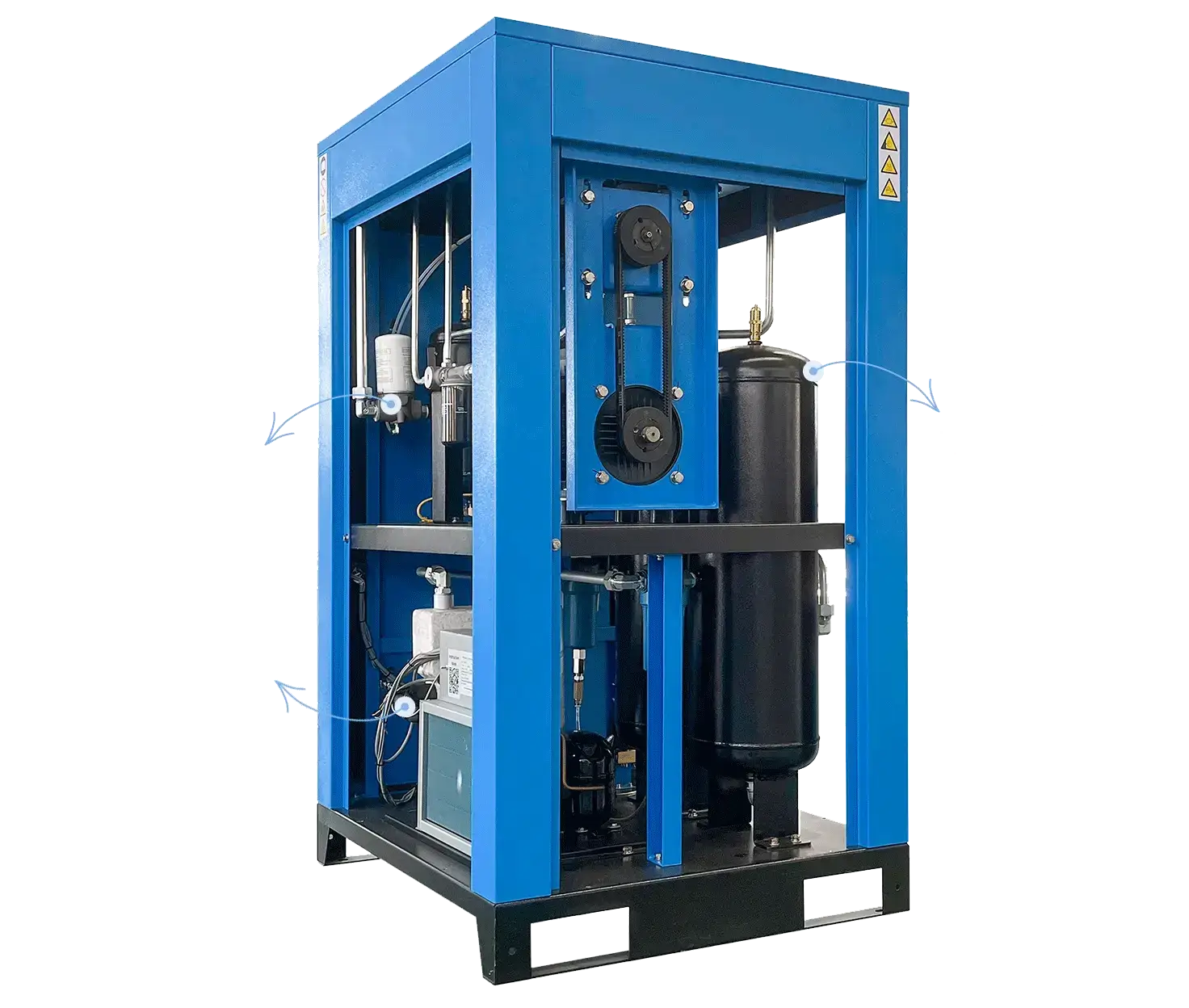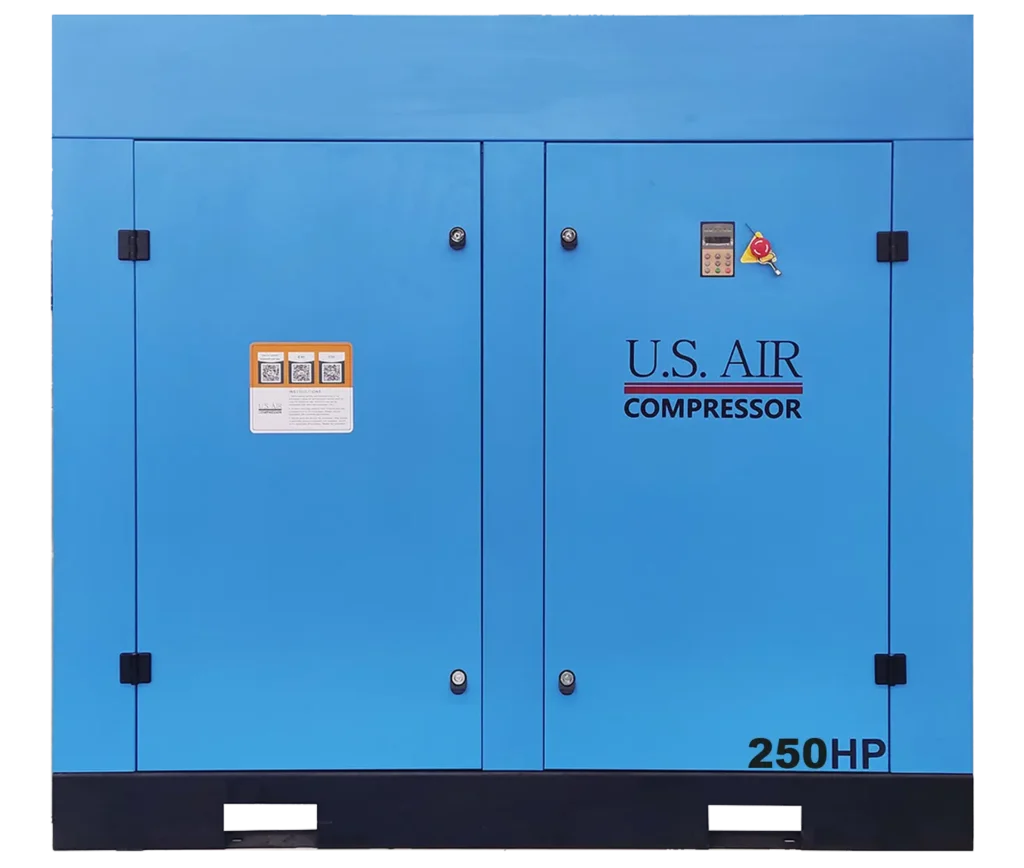Energy Efficiency Reference Guide for Compressed Air Systems
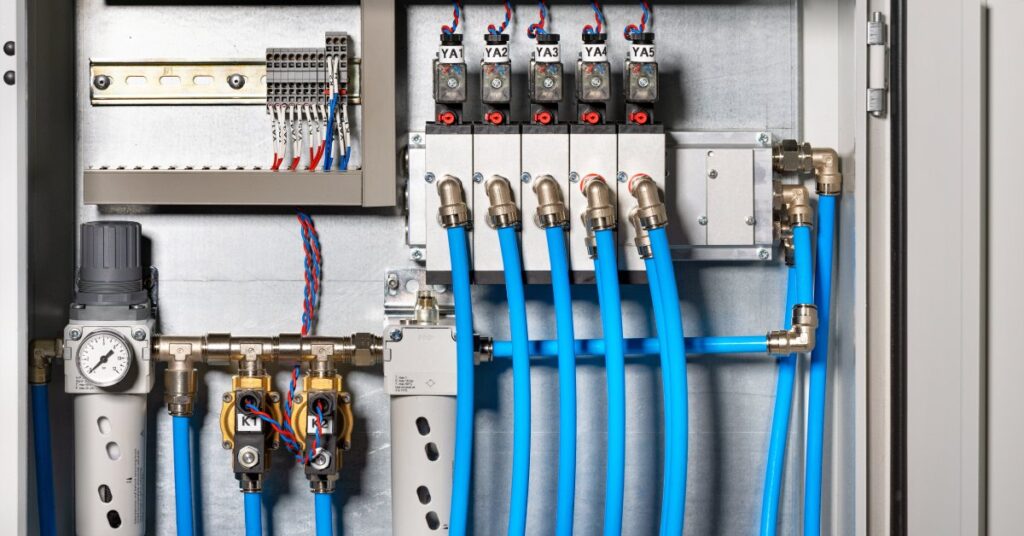
Compressed air systems power tools and equipment, keeping countless operations running smoothly. However, with their energy-intensive nature, these systems can cause inefficiencies. Improving the energy efficiency of key industrial processes is good for the environment and results in considerable cost savings for businesses.
In this energy efficiency reference guide for compressed air systems, we’ll explore the factors affecting implementation and the steps business leaders can take to optimize energy use while cutting costs.
What Are Compressed Air Systems?
Compressed air systems generate pressurized air to power machinery, tools, and assembly lines. It provides energy in a clean, safe, and easy-to-control form, making it reliable and adaptable. However, convenience often comes at a cost. Compressed air systems are notorious for being energy-intensive, highlighting the need for changes to energy efficiency.
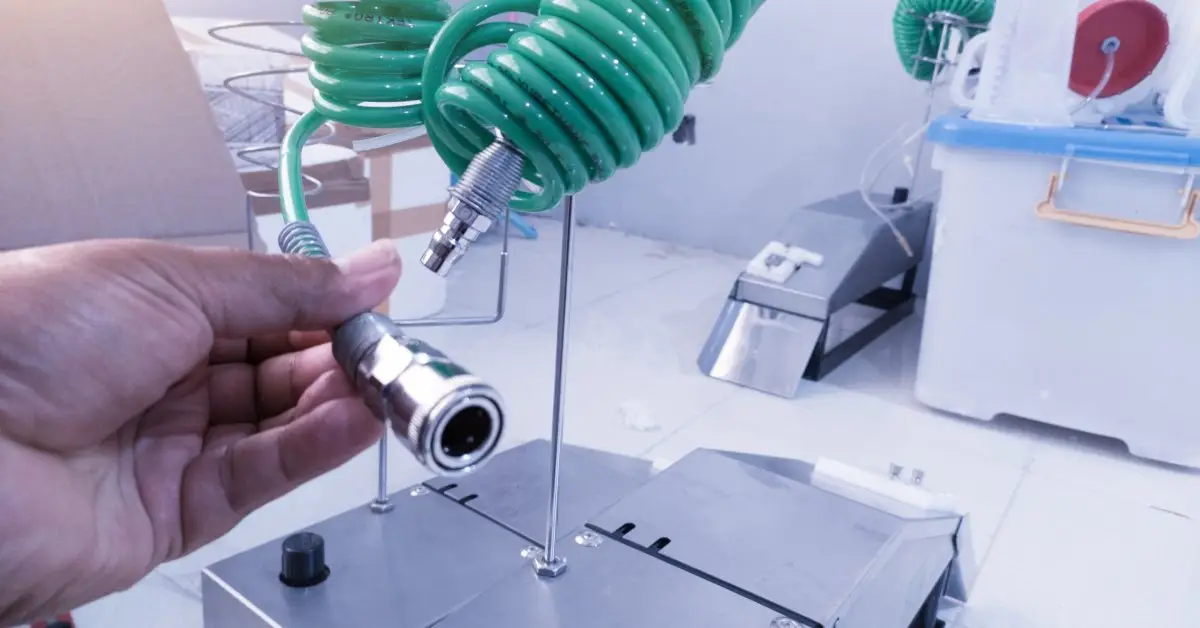
Industries That Use Compressed Air
Compressed air systems are the backbone of several industries:
- Automotive manufacturing: Powering assembly tools and equipment.
- Food and beverage: Ensuring contamination-free processing and packaging.
- Pharmaceuticals: Driving production lines under sterile conditions.
- Textile and printing: Delivering clean, pressurized air for dyeing and printing processes.
- Construction: Powering tools like jackhammers and drills.
- Mining and metallurgy: Operating ventilation systems and machinery.
Understanding the strengths and limitations of compressed air allows business leaders to leverage systems for better results in their manufacturing process.
Environmental and Economic Benefits of Compressed Air
Deploying compressed air systems presents benefits that can reduce your environmental footprint while improving the return on investment (ROI).
Less Waste
The use of advanced materials in manufacturing and industrial processes contributes to reduced waste. These materials are more durable and efficient, decreasing the need for frequent replacements or repairs. This lowers the number of discarded components and minimizes the environmental impact associated with disposing of waste.
Reducing Your Carbon Footprint
By minimizing energy consumption, business leaders can reduce carbon emissions. Adopting efficient systems aligns with global sustainability goals and enhances a company’s reputation as an environmentally conscious entity.
Cost Savings and Return on Investment
Energy-efficient compressed air systems can reduce utility bills and operating costs. While the initial investment in modern technology may seem high, the long-term savings and enhanced productivity make it a smart financial decision.
Understanding Energy Efficiency in Compressed Air
Energy efficiency in compressed air systems depends on a variety of factors, such as air leaks, improperly sized components, and inefficient usage practices. Even minor inefficiencies can snowball into energy waste over time.
- As some of the biggest culprits of inefficiency, leaks can account for 20–30 percent of total energy use in compressed air systems.
- Running systems at unnecessarily high pressure results in energy consumption and wear.
- Clogged filters, dirty components, and lack of regular maintenance reduce a system’s efficiency over time.
- Inefficient use of air receivers can lead to frequent starts and stops, which consume excessive energy.
- Oversized compressors are not only expensive but also inefficient, as they run at less-than-optimal levels for most of their operational life.
- Undersized components, such as pipes, filters, and regulators, create bottlenecks that reduce the system’s overall efficiency.
Improving Energy Efficiency in Compressed Air Systems
Energy-saving strategies are essential for reducing operational costs, minimizing environmental impact, and ensuring long-term sustainability. Here’s how to achieve the best results:
1. Regular Maintenance and System Checks
Scheduling maintenance is one of the simplest and most effective ways to improve efficiency. Cleaning or replacing filters, checking for leaks, and lubricating moving parts can make a noticeable difference in the performance of the compressed air system.
2. Implementing Variable Speed Drives (VSDs)
Variable speed drives automatically adjust the output of compressors based on load requirements. This minimizes energy consumption during low-demand periods, leading to significant cost savings.
3. Optimizing Compressed Air Use
Eliminating unnecessary tasks that use compressed air, fine-tuning pressure levels, and training staff on proper system usage can save thousands of dollars annually. Simple fixes, such as repairing leaks or insulating pipes, reduce energy waste while air travels through the system.
4. Utilizing Energy Efficiency Incentives and Rebates
Many utility companies offer incentives for businesses that invest in energy-efficient equipment. These financial incentives can offset the cost of upgrades, making them the ideal option.
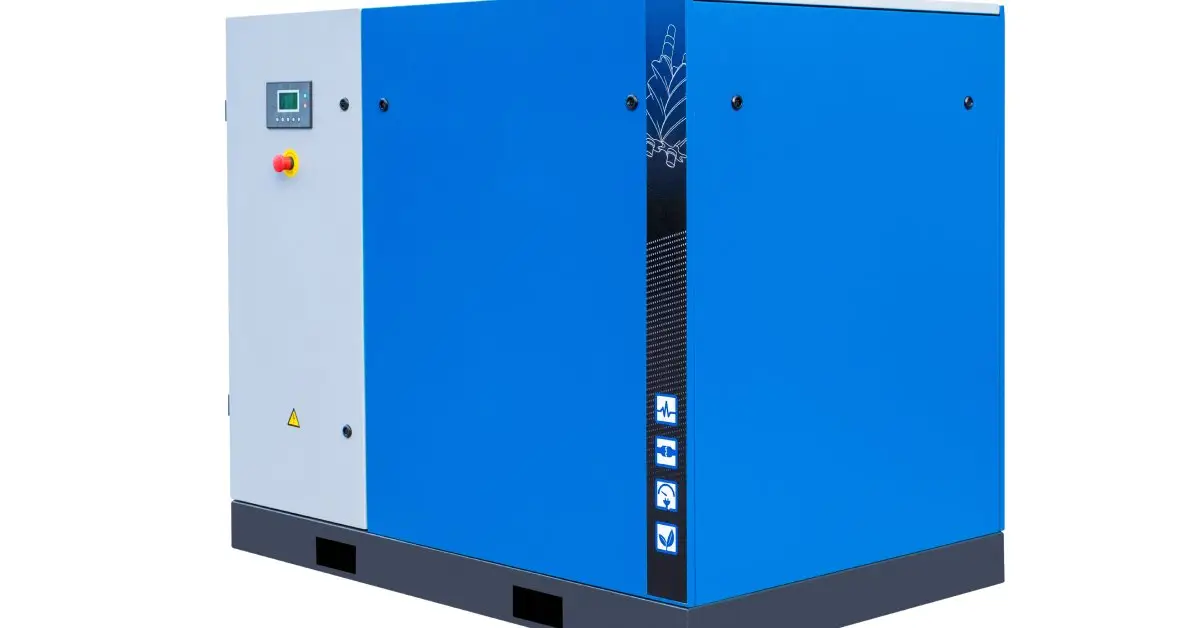
The Role of Technology
Innovations in technology play an important role in the efficiency of compressed air systems. Here’s how they’re changing the manufacturing landscape:
Advancements in Compressor Technology
Modern compressors have energy-efficient designs, such as oil-free systems and high-efficiency motors. These advancements reduce downtime and energy waste, translating to better ROI.
Smart Systems for Monitoring and Control
The Industrial Internet of Things (IIoT) has revolutionized how professionals manage compressed air systems. Smart monitoring tools analyze system performance in real time, alerting users to inefficiencies or issues before they worsen. Software solutions can also optimize compressor operation by balancing loads and minimizing downtime.
Advanced Materials in Compressed Air Systems
The integration of advanced materials into compressed air systems has brought improvements in durability and performance. Components made from lightweight alloys and composite materials sustain less wear and tear, extending the lifespan of the equipment. Additionally, these materials exhibit higher resistance to corrosion and extreme temperatures, ensuring reliable operation.
Best Practices and Recommendations
Getting the most out of your compressed air system requires a bit of foresight. Before investing, consider these factors:
- System size and configuration based on your operational needs.
- Energy efficiency ratings and certifications (e.g., ENERGY STAR).
- Scalability to accommodate future growth.
Regulatory Compliance and Standards
Stay informed about industry regulations and standards. Compliance not only prevents legal complications but also ensures your systems are running safely and efficiently. ISO 11011 is a leading standard for compressed air systems, offering guidelines on energy audits and assessments.
Take Control of Your Compressed Air Systems
Efficient compressed air systems are essential for businesses that want to stay competitive and sustainable. This energy efficiency reference guide for compressed air systems can help you achieve substantial savings while offering environmental benefits. By following these strategies, your business can optimize energy use, reduce costs, and contribute to a greener future.
Need help taking the first step? US Air Compressor has you covered. We offer a variety of air compressor supplies, making it easier than ever to take care of your equipment. Together, we can create a customized solution that meets your needs.





